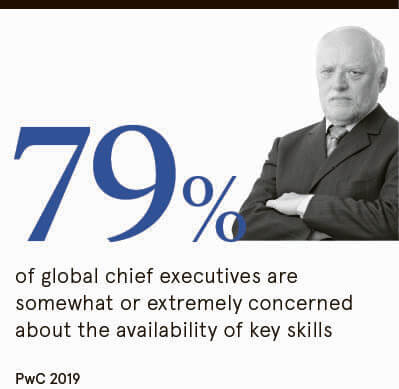1. Attract talent by understanding your future workforce
Kay Harriman, Senior director of HR, UK & Ireland Hilton
In terms of attracting top talent, the best advice I could give to companies is to understand your future workforce. HR directors need a comprehensive understanding of how Gen-Zers think and operate in order to engage and motivate them. Only by staying one step ahead of the next generation can businesses attract the brightest and the best – and ultimately stay relevant.
That’s why each year, we run Careers@Hilton events so we can hear from young people about what they want from the workplace and give them a taste of the industry.
Secondly, companies need to translate good intentions into action. For the hospitality industry in particular, it’s been critical to find ways to remove perceived barriers to progression. Therefore at Hilton, we’ve increased the number of flexible working opportunities that are available for senior operational roles, to keep the best talent within the business and attract the most experienced senior leaders.
2. Retain talent by caring for employees’ mental health
Josh Krichefski, Chief executive, EMEA, MediaCom
Organisations are aware of mental health issues, but it remains taboo – even though things are changing, employees are often afraid to speak out. This toxic culture can lead to presenteeism, absenteeism, and ultimately people leaving their job. A report last year found that a failure to recognise mental health problems cost businesses £1,300 for every UK employee. But if you show people that you truly care about their mental wellbeing and that you’ll support them when they need help, it makes a huge difference to how someone feels when they come to work. This helps to retain people who might have left, were the support not there.
Employees are not replaceable cogs in our machine. We have to treat them like stakeholders, with equal concern and care
One of the first steps that we took as a business was to introduce a dedicated mental health allies programme. Not because we had to, but because we understood that people should feel welcome and able to bring their true selves to work. I hope it shows our workforce that we value their wellbeing as much as we do their work. We now have 57 dedicated, trained allies alongside other wellbeing policies, such a ban on sending emails after 7pm. All to demonstrate to people that MediaCom is a safe and great place to work.
3. Look for “intrapreneurs” to create an innovation culture
Neil Sholay, Vice president of innovation, Oracle
We’re always looking for what we call “intrapreneurs” – people with an entrepreneurial spirit but work for large organisations. These tend to be people you go to when you’ve got a problem, something that’s not ‘business as usual’. It tends to be people looking at new approaches, new technology – the person that knows about blockchain when everyone else is still trying to figure out what it is.
They also tend to be the people that don’t fit in. Within my team, I’m very proud to say that I have a lot of people who were at one point people who didn’t fit anywhere else. I want those people on my team. So I say to clients: “Go find the people that don’t quite fit in and are challenging the status quo”.
But your team can’t be 100 per cent made up of those people. You also need some operational people, people who are concerned with governance, people who run projects on time and budget. Look for the character traits of intrapreneurs, pair them up with operational people, give them a bit of budget, and a bit of freedom, and they will amaze you.
4. Treat employees like stakeholders, even when offboarding
Brian Kropp, Group vice president of HR, Gartner
Historically, the thinking was “while someone works for me I pay them money and when they’re no longer working for me that relationship is over”. But employees are not simply replaceable cogs in our giant machine of an organisation. We have to treat them like stakeholders, with equal concern and care.
So the question now is: how do we help employees with their careers over the long haul, and how do we set them up for a successful career, even if it’s somewhere else? It’s about crafting a longer-term, more emotional relationship around how we treat each other fairly and align together to do something bigger.
Companies have started to talk with employees about how they can build skills that will help them with their next job. This includes creating more flexibility around training and communicating what the external labour market looks like so employees know what skills are more or less in demand.
